Black Tower Elderberry is an upright, fast-growing shrub adorning pink blooms and burgundy leaves resistant to most temperature dynamics but is sensitive to sunlight and water.
Black Tower Elderberry needs more maintenance as very little is known about their care requirements. But this article covers everything that can help grow the plant in your own backyard!
Table of Contents Show
Overview of Black Tower Elderberry
The Black Tower Elderberry is a deciduous shrub known for its pinkish blooms, deep green to purplish burgundy leaves, and purple-black berries.

Although the plant is a shrub, it spires to the height of a small tree, often confusing most plantsmen about its scape placement.
Some more interesting features of the plant are given in the table below.
| Features | Descriptions |
|---|---|
| Common Name | Black Tower Elderberry, European Elder, Black Elder, Elder, and Elderberry Tree |
| Scientific Name | Sambucus nigra |
| Family | Viburnaceae |
| Status and Ecology | Life Span: Perennial Deciduous Habit: Shrub or Shrubby Tree Native Range: Europe, South-Western Asia, and Northern Africa USDA Zones: 4 to 11 |
| Growth Rate | Moderately Fast |
| Height and Spread | 6-30 Feet × 3-4 Feet |
| Growing Seasons | Early Spring to Late Summer |
| Leaf | Shape: Sickle-Shaped with Serrated Margins Type: Pinnately Compound (Each Leaf with Many Leaflets) Size: 10 Inches Long Color: Dark Green to Purplish-Burgundy Texture: Shiny and Coarse |
| Flowering Period | Early to Late Summer |
| Flower | Inflorescence: Corymbose Color: Pale Pink to Bright Pink Shape: Cluster of Dome-Shaped Flowers Fragrance: Musky Sweet |
| Toxicity | Highly Toxic to Pets and Humans |
| Specialty | Purple-Black Fall Berries Dark Green or Purplish-Burgundy Colored Leaves Medicinally and Ornamentally Important Presence of Cyanide or Related Compound in the Parts |
Black Tower Elderberry: Ultimate Care Guide
As this plant is high-maintenance and a bit finicky, it will need your utmost care and attention to grow properly.
Among the different needs, light and temperature, humidity and watering, soil and fertilizer, pruning, and repotting care is vital for Black Tower Elderberries.
The plant can only grow to full stature outdoors as it needs constant sunlight.
Only baby Elderberries can be potted, but you must transplant them outdoors as they mature.
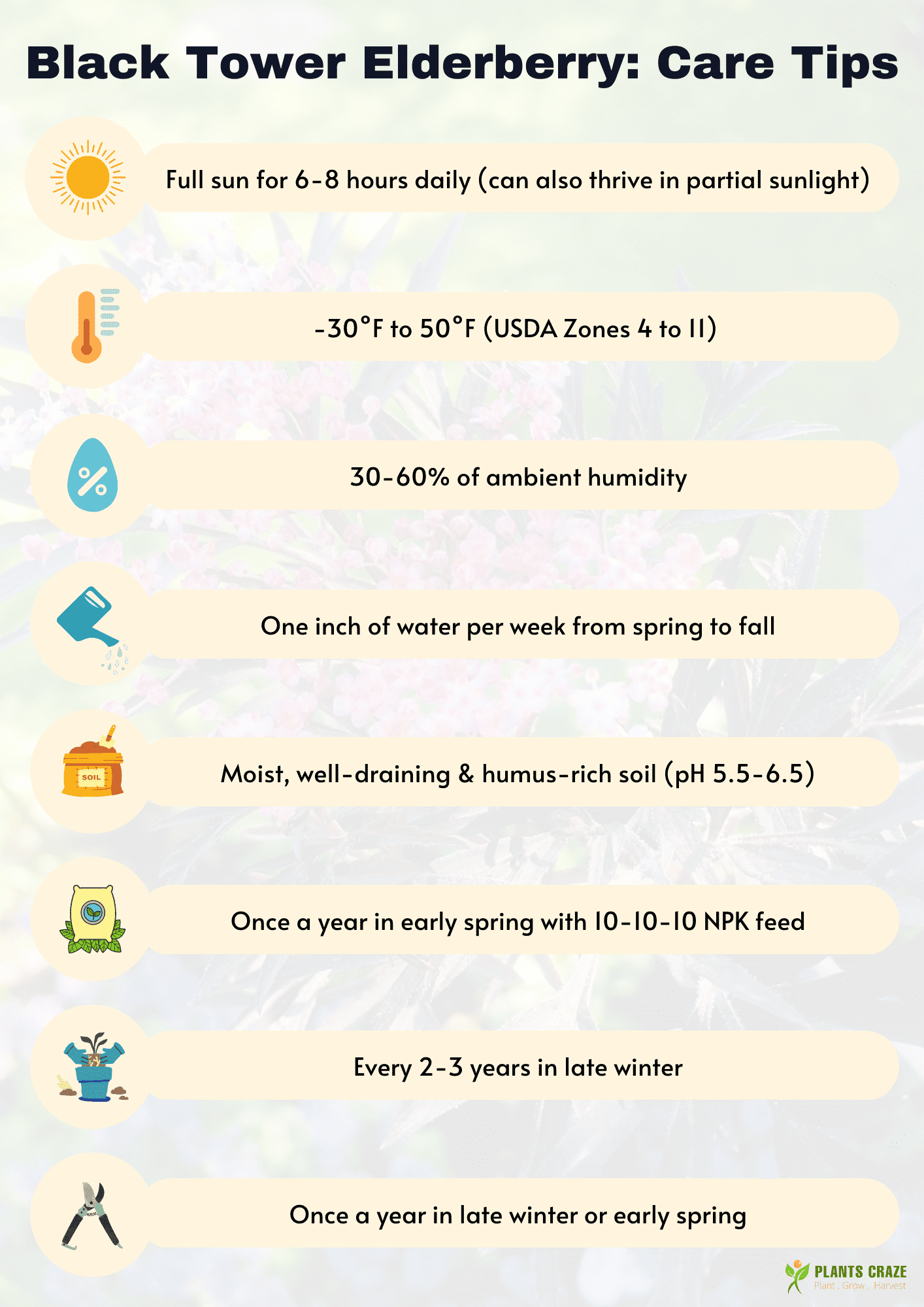
The difference in care may result from their temperate and deciduous habit.
Their habit allows them to tolerate colder climates that might freeze other houseplants.
However, pests and topical diseases frequently attack these plants, hindering their growth.
So, the plant needs occasional upkeeps to protect it from harm’s way.
1. Light and Temperature
Intense sunlight can increase the temperature, while less light can lower it.
For Black Tower Elderberries, full sunlight is necessary for strong foliage, flower, and fruit production in the growing seasons.
However, the plant steadily stretches within a wide range of temperatures and can easily grow in USDA Zones from 4-11.
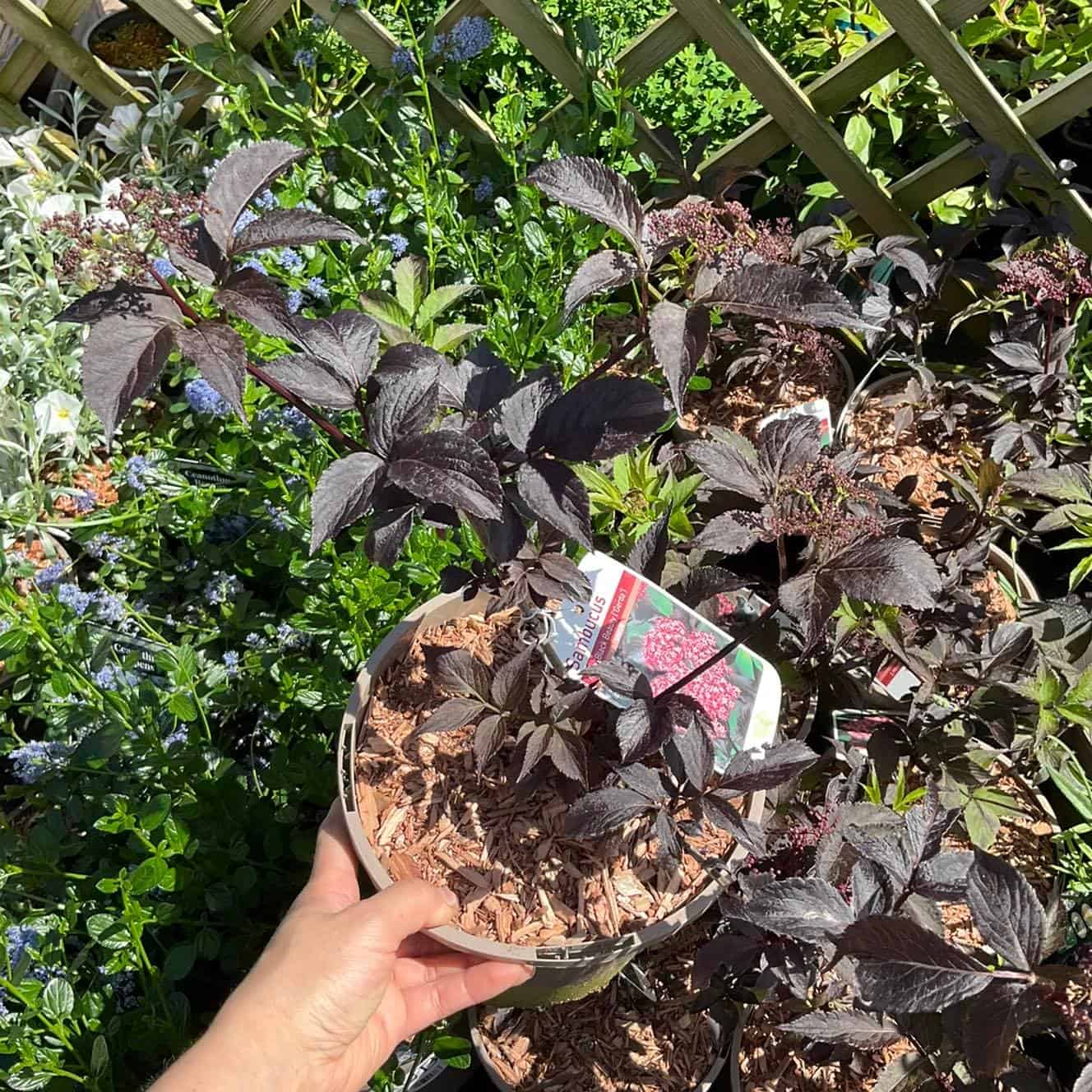
Considering this plant is native to regions with strong sunlight, it won’t be much affected by the harsh rays of the direct sun.
Also, the plant can thrive in partial shade or sunlight but for different time durations.
But excess or less light or temperature intensities can hamper the verdure and overall growth of the plant.
Signs of Excessive Light and Temperature
- Dry and droopy leaves
- Change in leaf color from usual to brown
- Crispy leaf tips and margins
- Brownish-black spots on the leaves
Signs of Low Light and Temperature
- Floppy leaves
- Off-color foliage (stays green all the time)
- Leaflet fallouts
How to Provide Adequate Light and Temperature?
- Place young Elderberry plants near a south-facing window at all times.
- Offer shade by hanging curtains or drapes on windows.
- If you are concerned about cold, relocate the plant away from the north-facing windows.
- Use frost blankets for outdoor plants to deter frost injuries.
2. Watering and Humidity
Black Tower Elderberries don’t like drought and love moist soil, but overwatering is also fatal for the plant.
The proper way to offer water is to wait for the soil to dry between the watering sessions.
However, the plant becomes dormant in winter and requires little watering. Overwatering during such periods can lead to soggy soil affecting the roots.
Additionally, the more sunlight Elderberry gets, the higher its transpiration rate and the more water it will need. So, always be watchful for the signs.
Symptoms of Overwatering
- Mushy and fishy-smelling soil
- Wet and floppy leaves
- Yellow and wilted foliage
- Black and pulpy roots
Symptoms of Underwatering
- Gradual yellowing and browning leaves
- Curling of leaflets
- Shallow roots visible on the soil surface in young plants
- Crispy leaflet tips and margins
How to Provide Adequate Water and Humidity?
- Use compost or mulch to cover the roots to retain moisture.
- Avoid watering after heavy rain.
- For potted plants, water the soil till it oozes out from the drainage holes.
- Uproot the plant, check for root rot, and change the soil to cut off the rot spread.
- To maintain humidity, group potted Elderberries with other houseplants in a well-lit bathroom.
- Bottom water potted baby Elderberries on a tray filled with 1-2 inches of water for 15-20 minutes.
- Mist the leaves of the plant in the strong summer heat to cool them down.
3. Soil and Fertilizer
Most plants have a particular preference for soil pH and soil type to grow well. However, Elderberry is not finicky for soil conditions and grows quickly in different soil conditions.
Over time, the soil may lose all its nutrients due to continuous watering and repotting. So, it’s vital to offer new soil that can replenish the daily nutrient needs of the plant.
Furthermore, you should never fertilize the plant other than during the growing season, or there is a high chance of overfertilization.
Signs of Overfertilization
- Deposition of fertilizer salts on the topsoil
- The margins and tips of the leaves appear burnt or crisp
- Root damage and difficulties in uptaking nutrients
Signs of Underfertilization
- Changes in leaf color
- Less frequent and smaller blooms and fruits
- Small-sized leaves and fruits
- Lack of proper root growth
How to Overcome Fertilization Issues?
- Flush the soil 4-5 times with distilled water to leach out the excessive fertilizer salts.
- Use half-diluted fertilizers while feeding the plant.
- Unclog the drainage holes of small Elderberry plants once a week to ensure good drainage.
- While repotting, place a layer of gravel or pebbles at the pot’s base before adding any soil.
- Fertilize the plant before watering it to leach the nutrients deeper into the soil layers.
4. Sporadic Repotting
Since Black Tower Elderberry grows to a staggering height, it should be planted in the ground.
In the juvenile stage, the plant can grow in shallow pots about 24 inches wide and deep containers with 4-5 bottom drainage holes.
But repot the plant every 2-3 years until it’s ready for transplanting in the ground.
Additionally, you must repot the plant in late winter, just before the spring, giving it time to adjust to the new environment and rejuvenate again.
Some signs that the plant may need a new pot are as follows.
- Stunted growth
- Shedding of foliage
- Yellowing of the leaves
- Poking of roots from the drainage holes
Thus, follow these steps to repot your Black Tower Elderberry.
- Gently remove your plant from the old pot without disturbing the root ball and keeping it intact.
- Remove yellow, wilting, and dead leaves.
- Take a new container, fill it with pebbles or gravel, and add a thick layer of fresh potting soil.
- Place the plant in the middle of the pot and fill up the sides with soil about an inch below the brim.
- Firmly press the soil to free it from air pockets.
- Water the plant thoroughly and place it in a well-lit location.
5. Annual Pruning
Pruning the Elderberries is crucial to upkeep its seasonal foliage flush and invoke the plant to grow new leaves.
Additionally, pruning is an energy-saving process for the plant to flower and fruit in the later seasons.
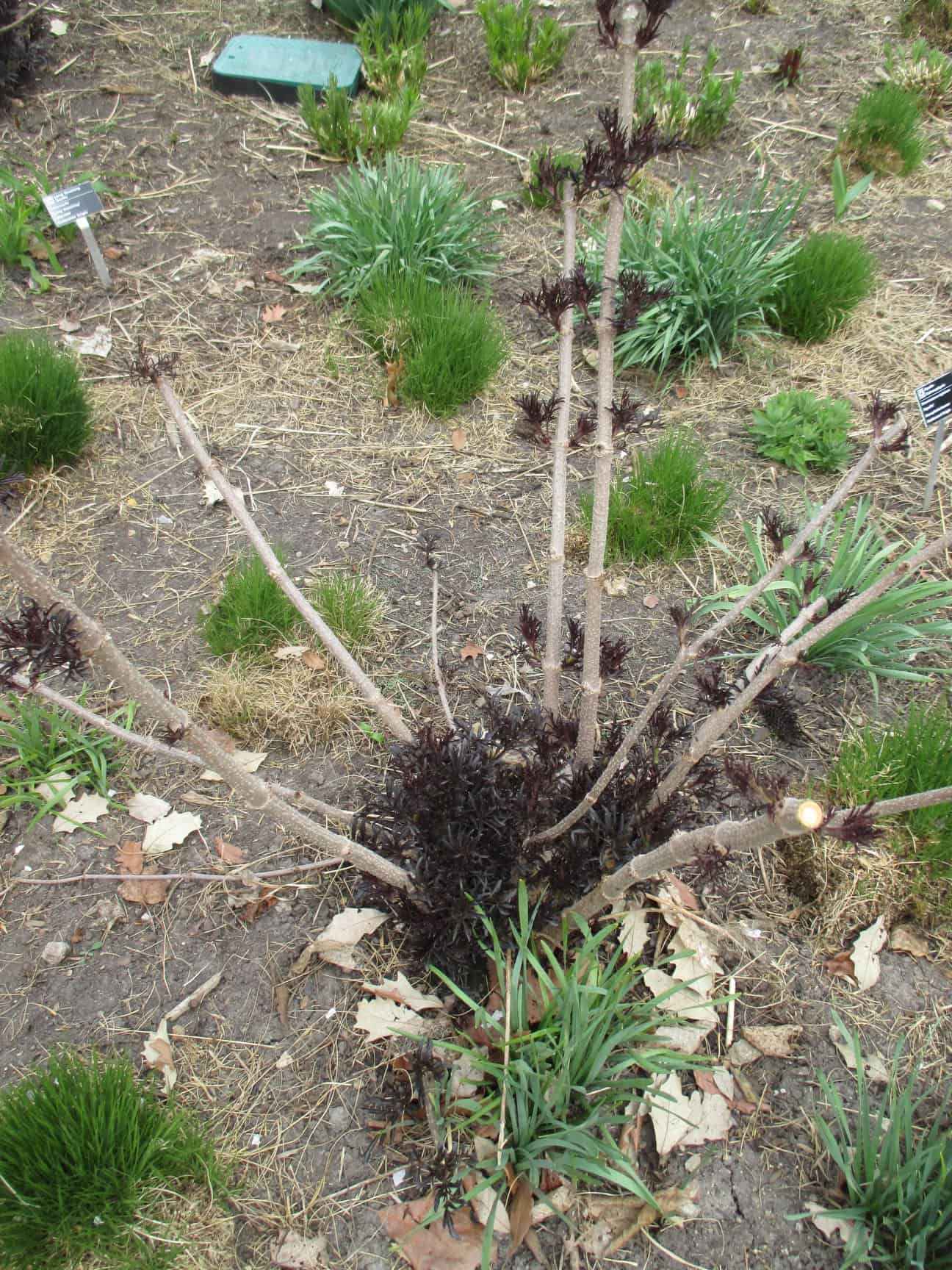
Elderberries are deciduous, meaning they shed their leaves at the onset of winter, so the pruning process seems easy.
However, the plant is still prone to pests (mealybugs, aphids, borers, spider mites and scales) and diseases (cankers, powdery mildews, leaf spots, etc.).
Keeping the diseased parts can increase the incidence of diseases and pests in nearby plants or even kill the whole plant.
So, to properly trim the plant, you can follow these easy steps.
- Locate the dead or diseased parts and snip them off with sterilized shears.
- Pinch out the dead flowers using your fingers.
- Cut the old or broken fruiting canes from the trunk first and remove the ones older than 3 years.
- If you are taking cuttings for propagation, make a 45° cut in green and healthy canes.
- Dab pests with q-tips laced with neem oil or spray at the infection for diseases.
- Burn the cut debris to prevent the extent of diseases and pests.
Black Tower Elderberry takes at least 2 years to properly establish itself in a new environment beginning from first propagation or germination. So, it’s ideal to forgo repotting or pruning for the first 2 years!
Black Tower Elderberry: All About the Growth Rate
Black Tower Elderberry is a plant with a quick growth rate that can grow about 6-8 feet in height and 3-4 feet wide.
However, in some cases, the plant can attain a towering height of 20-3o feet.
Like most temperate species, the plant sheds its leaves in winter to cope with water loss from the dry winter air and secure some energy for the spring.
The plant grows rapidly from early spring to mid-summer. At that time, it also starts producing flower buds that open during the late summer.
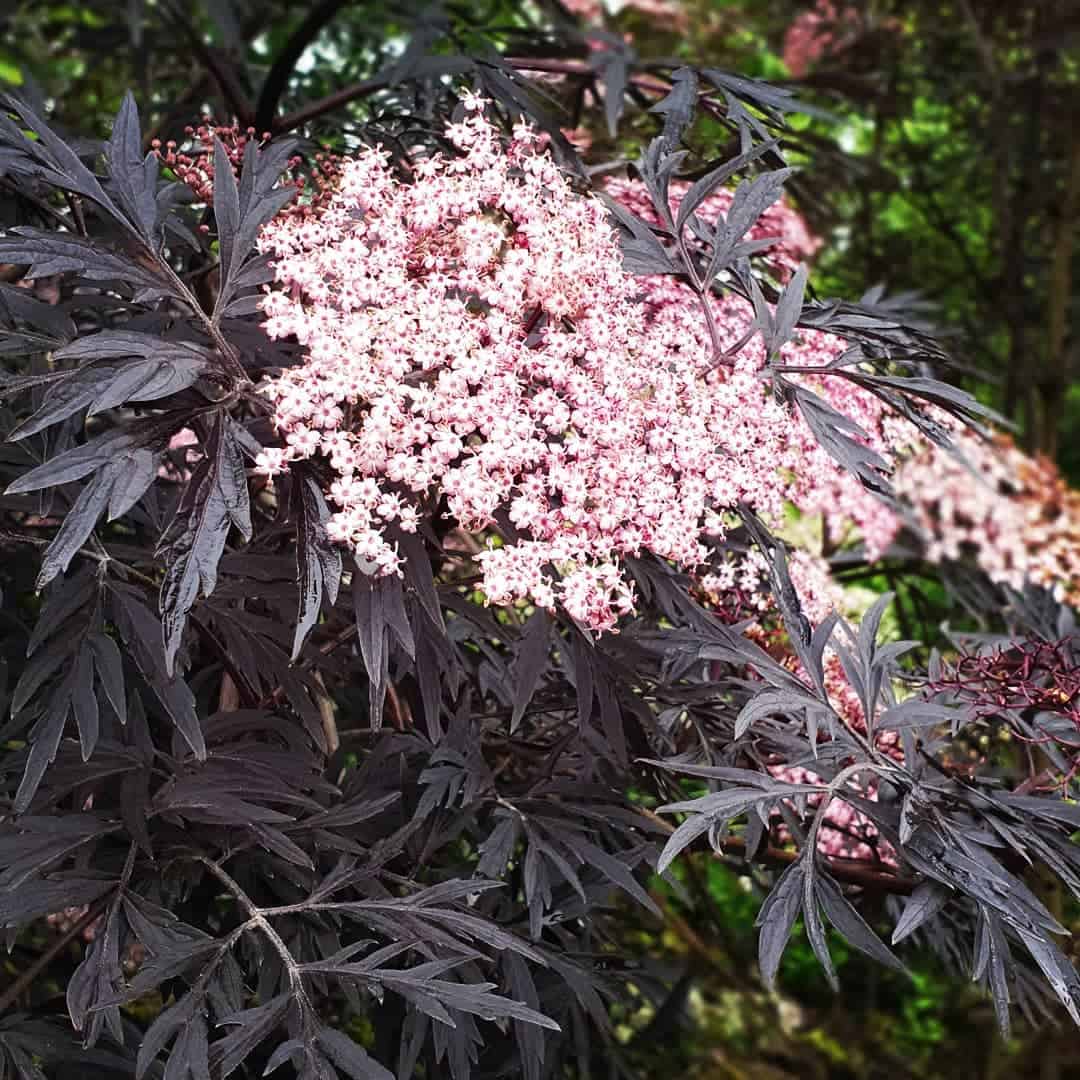
Flowers of the plant are arranged like the top of an umbrella, and technically this kind of arrangement of flowers is called corymbose or corymb.
To better understand, think of the top of broccoli or cauliflower, but the flowers are pale pink or rosy pink, with a musky fragrance that lures pollinators like bees and butterflies.
After pollination, the flowers are replaced by purplish-black berries, appearing in clusters with 1-2 seeds.
Toxicity of Black Tower Elderberry
The ripe and purplish-black fruits of Elderberries are edible and have been used to make confectionaries and other food products.
But the unripe berries, leaves, stems, flowers and roots house poisonous cyanogenic glycosides.
According to research, the extracts of flowers and berries pose low toxicity to the cell lines.
Additionally, even ripe berries can be toxic to pets.
Your pets may exhibit symptoms like vomiting and diarrhea, but toxins might be too low to pose a life-ending threat.
Nevertheless, pets must be kept from the plant and its parts at all times.
If your pets happen to eat the plant parts and start showing toxicity symptoms, call any of the numbers to register a case of emergency.
Propagating Black Tower Elderberry
Black Tower Elderberry can be propagated with seeds and softwood cuttings.
Most people choose the cutting method since growing from seeds can take a long time and is complex.
Furthermore, propagating Black Tower Elderberry through seeds is only possible if the seed is of a non-hybrid type.
1. Propagating Via Seeds
Elderberry seeds need special cold treatment to activate germination, called stratification. You can collect the berries in the fall.
To stratify, separate the seeds from the pulp by crushing the berries in a bucket of water, leaving the seeds in the mix for 24 hours and then straining the pulpy mix.
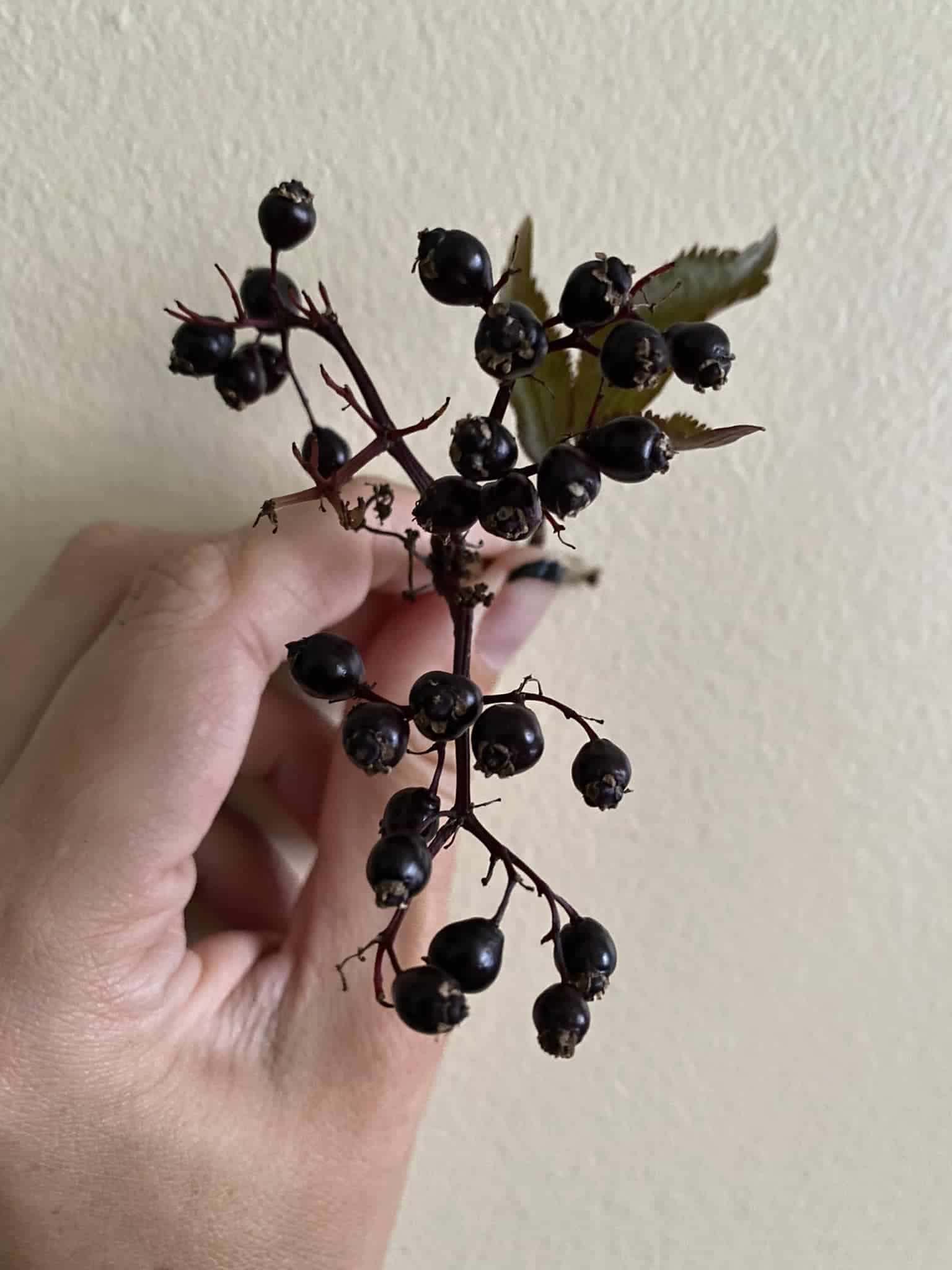
Straining shall separate the seeds that later need air drying by wrapping them with tissue paper for a week.
Then you can cold stratify the seeds by placing them in a zip-lock bag and keeping them inside the fridge for 60-90 days at 39-41°F.
After the stratification, follow the steps below to sow Black Tower Elderberry Seeds.
- Take a seed starting tray with a dome, add the potting mix, and then sow the seed separately.
- Place the seeds at a depth of one-fourth inch.
- Cover the seeds with the dome to secure humidity and warmth.
- Place the tray in a bright, well-lit location and maintain soil moisture regularly until germination.
- After the seedlings grow new leaves in 1-2 years, transplant them in a large suitable-sized pot.
If you want to propagate the seeds without stratifying first, they can take 2-5 years to germinate.
Thus, you would want to stratify the seeds properly for quicker germination.
2. Propagating Via Cuttings
Propagating via cuttings is also the one with a higher success rate.
You can use softwood cuttings taken in early spring for propagation, as they bear ready-to-grow buds.
Hardwood cuttings are also probable for propagation, but they usually take time to sprout.
Hardwood cuttings are typically taken in fall or winter when the plant is dormant, whereas softwood cuttings are taken in early spring.
Follow the steps below to propagate your Black Tower Elderberry through stem cuttings.
Step 1: Prepare the Stem Cuttings
- Identify a healthy branch that is straight, green, and consists of leaf nodes.
- Make a 45° cut which shall be the rooting end.
- Leave at least 3-6 inches, include at least two nodes, and cut the other end.
- Remove the leaves from the lower two-thirds of the cuttings and leave one at the top
- Soak the cuttings in distilled water for 12-24 hours.
- After the soaking is complete, it is time to plant your cuttings.
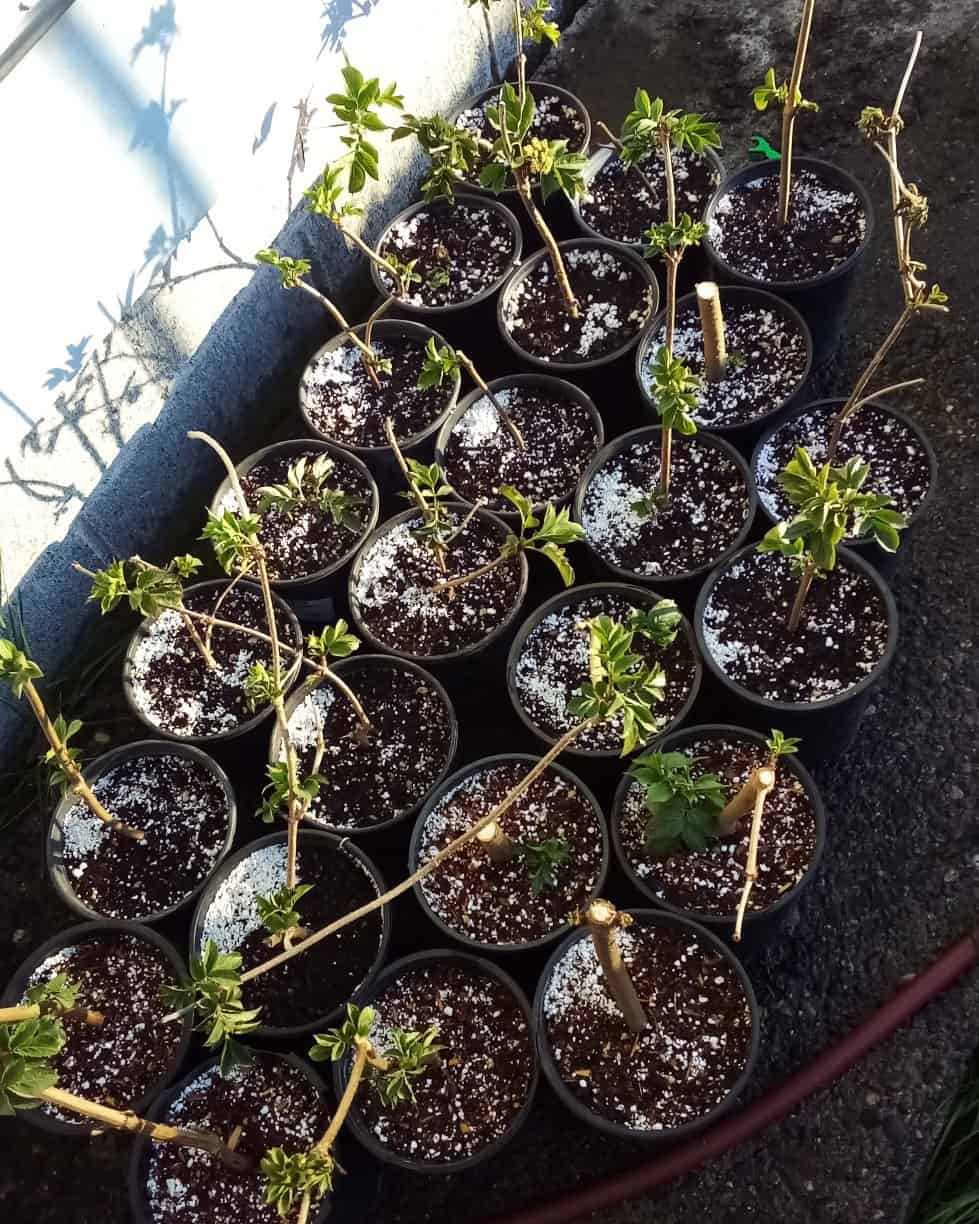
Step 2: Planting the Cuttings
- Remove the cuttings and place them in a clean paper towel to dry.
- Apply a small amount of rooting hormone to the cut end.
- Fill a sizeable 4 inches wide pot with the soil and poke a hole in the soil with your finger.
- If you have multiple cuttings, take a separate pot for each.
- Place the cutting in the hole, cover it with some soil and locate the pot in bright indirect sunlight.
- You can also cover the pot with a plastic bag or zip-lock to maintain ideal conditions for rooting.
- After 6 weeks, your plant will grow new roots and be ready to be transferred to a new pot.
Once transferred into a new pot, the plant will require at least 6-8 hours of daily sunlight and regular watering.
It is a slow grower and can take up to a year to root fully. Thus, it is not worth worrying about if the cuttings lack vigorous growth.
You can also watch the following video to get an idea about propagating Elderberry cuttings in water.
FAQs About Black Tower Elderberries
Do Black Tower Elderberries Comeback Every Year?
Elderberries are perennials that produce new canes or stems yearly, even after pruning.
Are Black Tower Elderberries Invasive?
Without pruning and control, the plant can spread outside its comfort zone and invade new regions.
Should You Cut Back Black Tower Elderberry?
You can cut Elderberries to the ground, but this should be done in winter when the plant is dormant with all the above-ground parts dead.
From Editorial Team
Plant the Cuttings at Equal Distances in the Soil!
After the cuttings sprout good roots, uproot them and plant them about 6-10 feet away from each other in the soil. This allows the plant to spread freely without any resistance from neighboring Elderberries.


